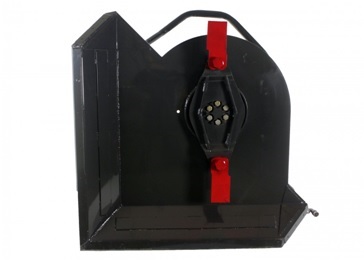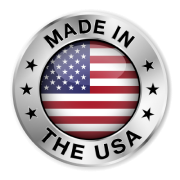Safety First: Essential Safety Practices When Operating Skid Steer Articulating Brush Cutters
Posted by Lee Padgett on 31st Oct 2023
Are you prepared to take on the untamed wilderness, conquer unruly vegetation, and create a masterpiece in your landscaping project? Skid steer articulating brush cutters offer unparalleled power, allowing you to tame even the most stubborn vegetation with ease.
But amidst the excitement of the task at hand, let us not forget the paramount importance of safety.
In this gripping article, we embark on a journey through the essential safety practices that every operator must heed, ensuring a secure working environment while preventing potential accidents that could derail your project. So continue reading if you're looking to maximize your efficiency while safeguarding yourself and those around you from unforeseen dangers.
Pre-Operation Safety Checks
Before firing up the skid steer articulating brush cutter, it's crucial to perform a series of pre-operation safety checks. These checks ensure that the equipment is in optimal working condition and minimize the risk of mechanical failures during operation. Here are some key points to consider:
1. Inspect the cutter for any signs of damage or wear:
Pay particular attention to the blades, belts, and hydraulic lines. Look out for cracks, dents, or excessive wear that might compromise the cutter's functionality. Suppose you spot any irregularities or signs of damage. In that case, it is crucial to address them promptly by replacing worn-out components or seeking professional assistance.
2. Check the hydraulic fluid and fuel levels:
Ensure they are both at the recommended levels. A well-nourished brush cutter is key to a successful operation. Inadequate hydraulic fluid can impede the machine's performance, resulting in sluggish movement or reduced cutting power.
3. Test all controls:
The skid steer articulating brush cutter boasts an array of controls that dictate its movement and cutting prowess. Prior to engaging in your brush-clearing mission, thoroughly test all the controls, including the articulating arm and cutting attachment. Verify that they respond promptly and function as intended.
4. Verify safety guards and shields:
The safety guards and shields integrated into the skid steer articulating brush cutter serve as crucial protective barriers, shielding both the operator and bystanders from potential hazards.
Before commencing your brush-cutting expedition, meticulously inspect these safety features and ensure they are in place and securely fastened. Any loose or missing guards should be addressed promptly to maintain a safe working environment.
Personal Protective Equipment (PPE)
Skid steer articulating brush cutters involve working in potentially hazardous environments. Wearing the appropriate Personal Protective Equipment (PPE) is vital for operator safety. Here are the essential PPE items to wear:
- Hard hat: Protects the head from falling debris and branches.
- Safety glasses or goggles: Shields the eyes from flying debris and dust.
- Ear protection: Reduces exposure to loud engine noise.
- High-visibility vest: Enhances visibility to others on the worksite.
- Steel-toed boots: Provides foot protection from heavy objects and potential impacts.
Operator Training and Familiarization
Operating a skid steer articulating brush cutter requires proper training and familiarization with the equipment. By investing time in comprehensive training, operators can confidently handle the machine and minimize the risk of accidents. Consider the following points:
- Attend training programs specific to skid steer articulating brush cutter operation.
- Learn the machine's controls, including the articulating arm, cutting attachment, and safety features.
- Understand the equipment's limitations and recommended operating parameters.
- Practice in a controlled environment before tackling challenging terrains or projects.
Clearing the Work Area and Communication
Preparing the work area and establishing clear communication protocols are essential for maintaining a safe environment while operating a skid steer articulating brush cutter. Here's what you should do:
- Clear the work area of debris, obstacles, and potential hazards.
- Mark any underground utilities or obstacles to avoid accidental damage.
- Establish clear communication signals or use two-way radios to communicate with others on the worksite.
- Ensure all workers in the vicinity are aware of the machine's operating area and stay at a safe distance.
Safe Operation Techniques
When operating a skid steer articulating brush cutter, following safe operation techniques is crucial for preventing accidents. Here are some important practices to remember:
- Maintain a stable and balanced position on the machine.
- Keep a safe distance from the cutting attachment while it's in operation.
- Avoid operating the machine on excessively steep or unstable slopes.
- Take breaks when needed to prevent fatigue, as fatigue can affect concentration and reaction time.

Safety First for a Successful Operation
Operating a skid steer articulating brush cutter requires a combination of knowledge, skill, and a commitment to safety. By following these essential safety practices, operators can create a secure working environment while efficiently clearing vegetation and tackling landscaping projects.
Remember, investing in safety is investing in the success and well-being of everyone involved. Prioritize safety and equip yourself with a reliable skid steer articulating brush cutter from Spartan Equipment to ensure a productive and incident-free operation.



